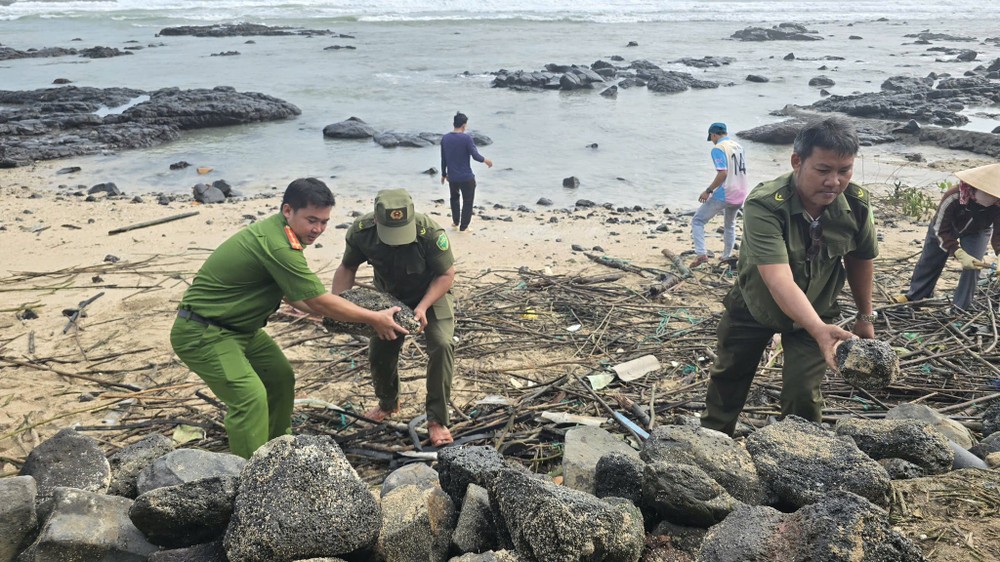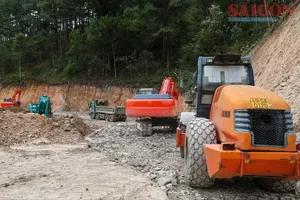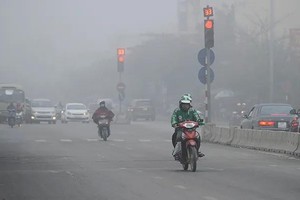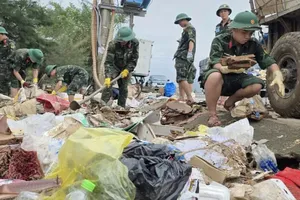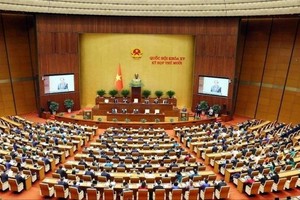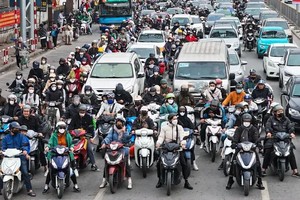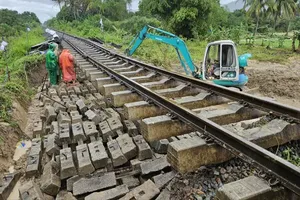
In Bac Nha Trang Ward, Pham Van Dong Street was blanketed with sand early Friday morning as swells surged over the seawall, impairing traffic and forcing motorists to navigate through layers of debris. The province had endured gale-force winds of 6 to 7 on the Beaufort scale, with gusts reaching levels 8 to 9, and waves rising as high as five meters overnight.

Shortly after 8 p.m. on November 27, repeated waves crashed over the coastal road, at times sweeping across the asphalt with enough force to topple motorcyclists. Nguyen Thi Uyen, a resident of Ba Lang (Bac Nha Trang Ward), recalled being struck by a surge of seawater while riding with her partner. “If we hadn’t kept a firm grip on the handlebars, we could have fallen,” she said.
Similar scenes unfolded near Tram Huong Tower in downtown Nha Trang, where waves slammed into the stone embankment, sending spray high into the air.
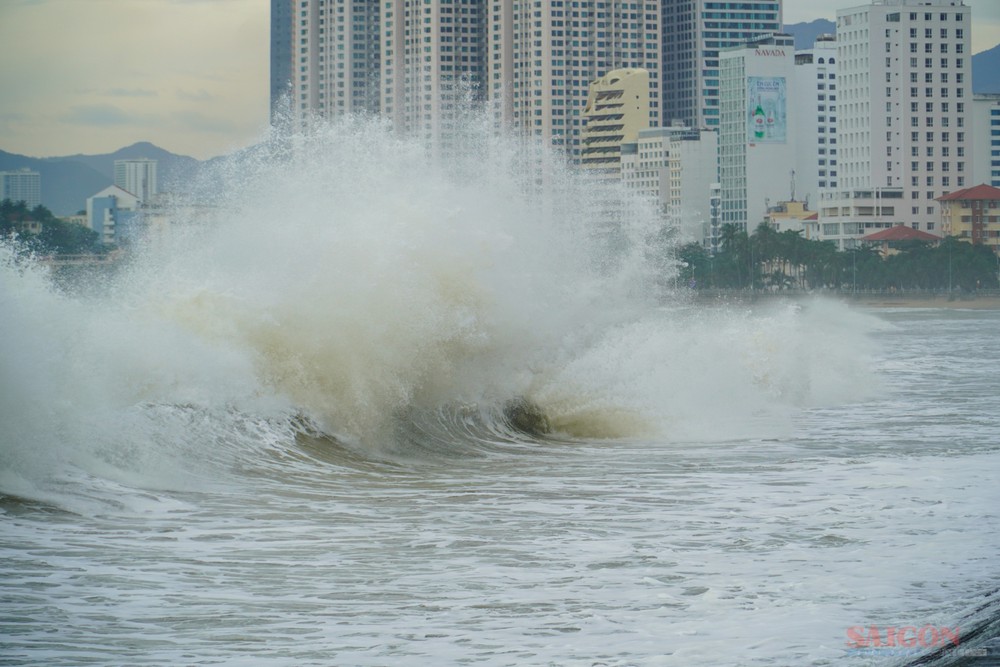
As the storm’s trajectory remained unpredictable, the People’s Committee of Khanh Hoa Province issued an urgent directive requiring local authorities to intensify disaster-response measures and accelerate post-flood recovery. Agencies were instructed to capitalize on brief periods of stable weather to repair damaged infrastructure and housing, reinforce vulnerable sites, and station guards at inundated or fast-flowing sections to prevent access.

One of the most critical repair sites was the northern abutment of Tran Phu Bridge, where crews worked through the morning of November 28 to clear collapsed concrete and secure the structure. The bridge’s right-side abutment and embankment had suffered severe scour during the historic combination of torrential rains, storm surge, and high tides, raising concerns over traffic safety.
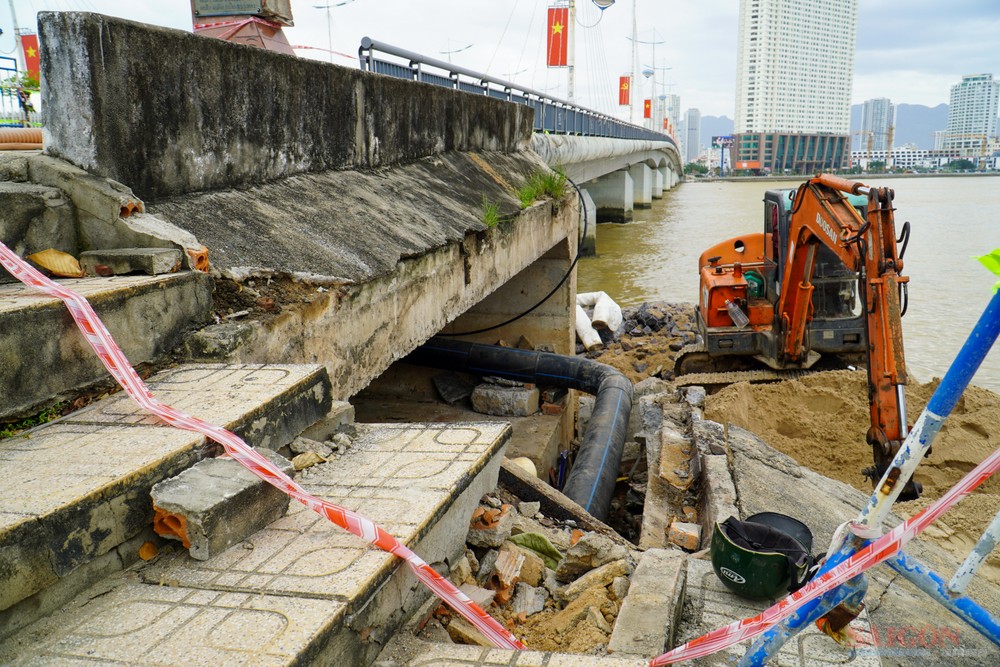

To facilitate emergency repairs, the provincial Department of Construction imposed nighttime traffic restrictions starting 11:30 p.m. on November 27. Trucks over 2.5 tons and buses with more than 16 seats were barred from crossing Tran Phu Bridge toward the city center, though the opposite direction remained open. Authorities also issued provisional traffic-diversion plans, redirecting heavy vehicles to alternate routes via Xom Bong Bridge. Tourist coaches heading to Ponagar Tower were assigned specific drop-off and pick-up points to avoid congestion.
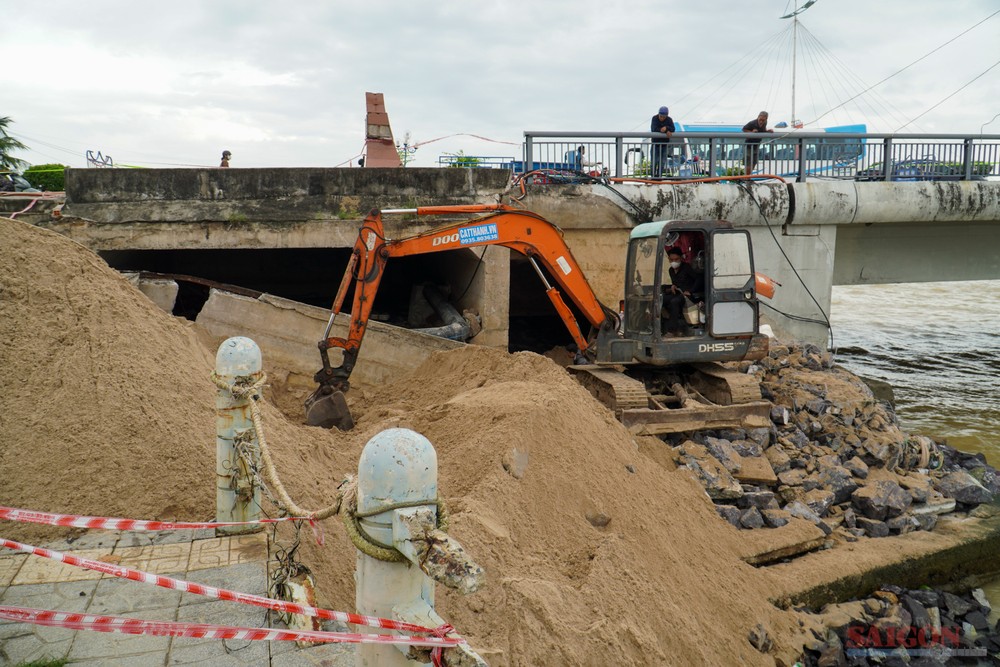
Built between 1999 and 2002, Tran Phu Bridge spans 458 meters and serves as a vital link between central Nha Trang and Bac Nha Trang. Its temporary closure has underscored the vulnerability of the city’s coastal infrastructure amid intensifying weather patterns.
Beyond the urban coastline, storm Koto also wreaked havoc on aquaculture farms in Phu Quy Special Zone in Lam Dong Province. By midday on November 28, local authorities reported extensive destruction of floating cages used to raise grouper, cobia, scalloped spiny lobster, and sea snails. Eleven households suffered losses estimated at more than VND2 billion.
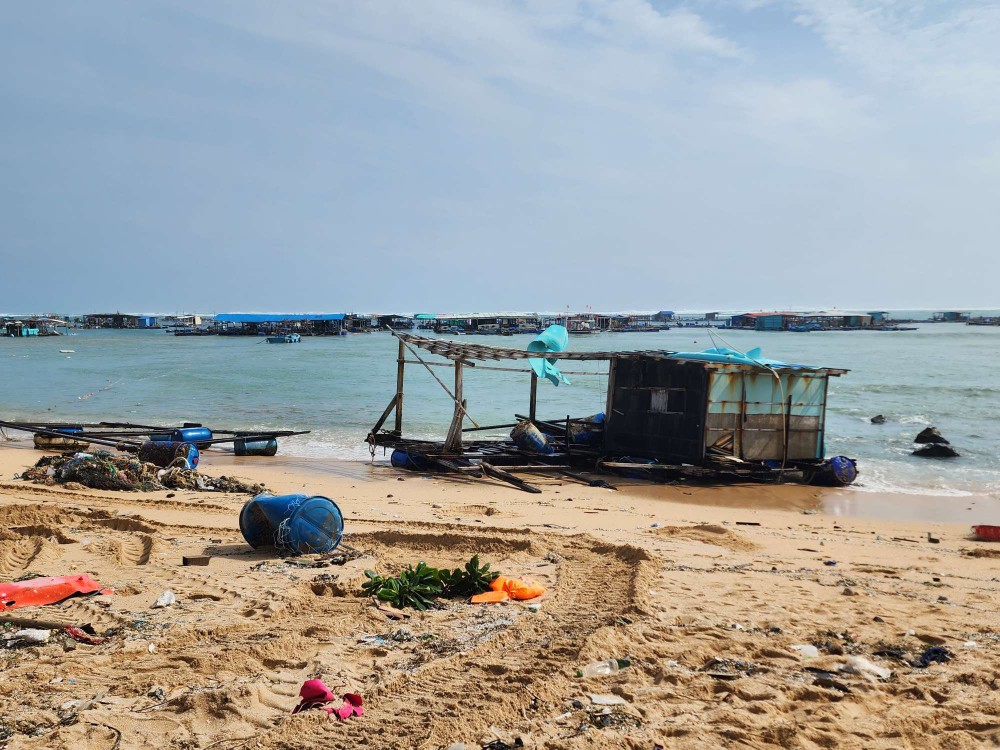
Chairman Le Hong Loi of Phu Quy Special Zone confirmed that strong waves had destroyed or swept away fish cages, canoes, and floating drums. More than 2,100 grouper and cobia, 100 scalloped spiny lobsters, and roughly 500 kilograms of sea snails were lost. The hardest-hit household, owned by Nguyen Thi Hiep, incurred damage of roughly VND900 million after all 12 of her cages were destroyed.
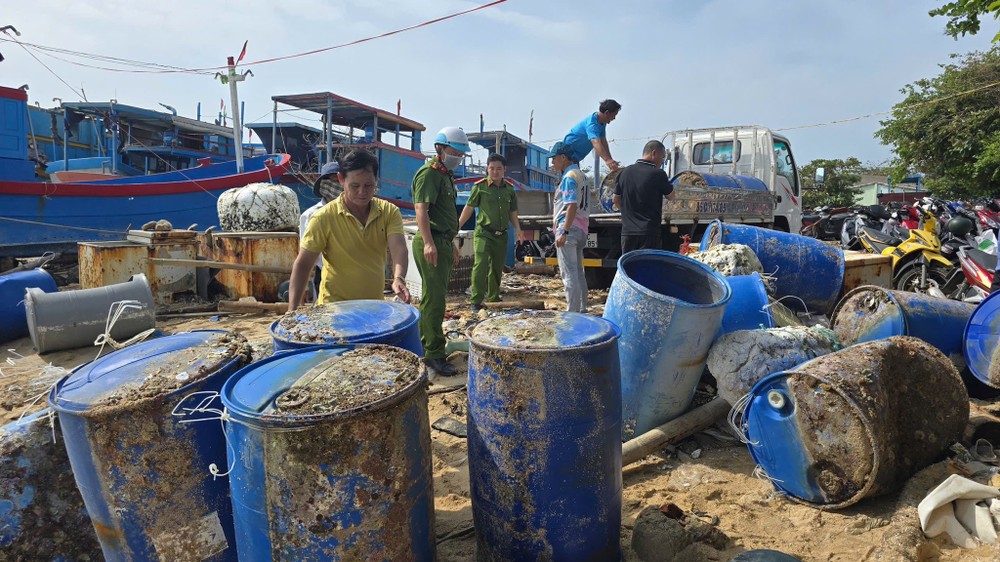
Border guards, police, soldiers, and residents have been mobilized to recover debris, retrieve drifting equipment, and reinforce surviving structures. Local authorities are continuing on-site assessments and preparing support proposals for affected families.
